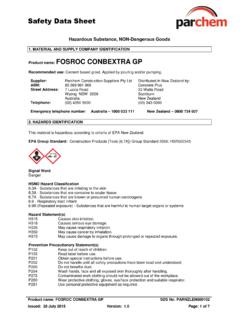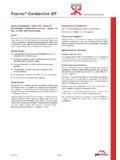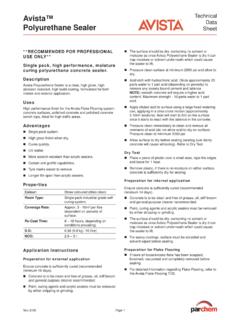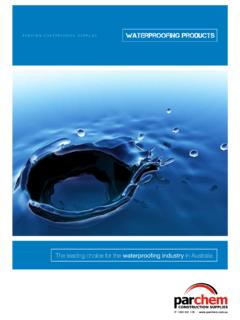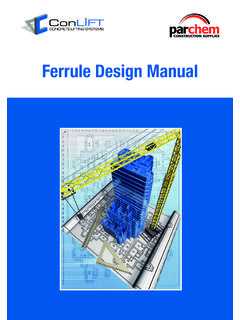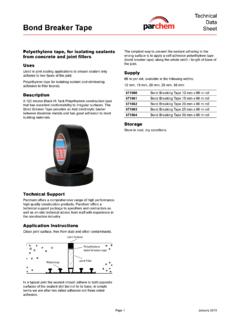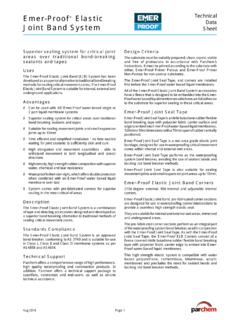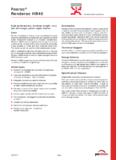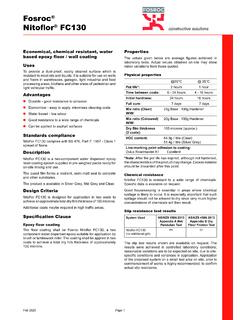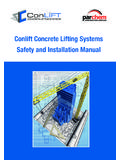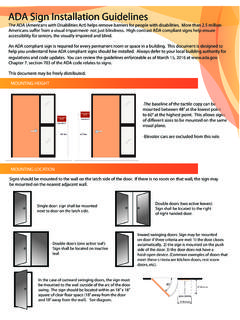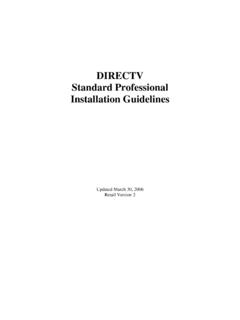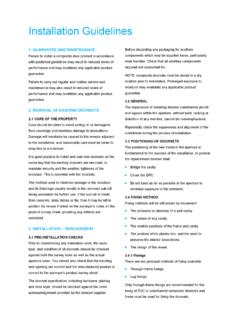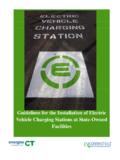Transcription of Hydrotite Installation Guidelines - Parchem
1 PARCHEMCONCRETE REPAIRFLOORINGJOINTING SYSTEMSWATERPROOFINGINSTALLATION GUIDELINESOCTOBER Lucca Road, Wyong NSW 2259 Sales 1800 801 108 Technical 1800 812 864 ABN 80 069 961 9681 Installation GuidelinesHydrotite Installation GuidelinesFor CJ0725-3K, DSS0220 & CJ1020-2K profilesCONSTRUCTION JOINTSA clean, dry, smooth surface (not scabbled) free from oils, grease, dust, debris, etc. is required, similar to a wood float or off-form finish. Air holes 4-5mm in diameter or depth should be grouted up with a non-shrink grout.
2 Hydrotite requires a minimum of 50mm cover of concrete from the edge for reinforced concrete and 100mm cover of concrete from the edge for unreinforced concrete (based on concrete strength of N/mm2) to accommodate swelling forces upon expansion. All joining methods of Hydrotite are by a neat, firm butt join firmly pushed up to the next section to be joined, this is achieved by cutting the ends square with a sharp knife or scissors. A bead of Leakmaster should then be placed across each join as leaks may occur due to poorly formed butt joins.
3 The use of Leakmaster in this area helps to ensure a watertight structure. We do not recommend nailing of Hydrotite (unless using adhesive) as it may be stretched or if loose form a curtain effect that would allow the concrete slurry or aggregate to get under or behind the Hydrotite . Leave a 100mm tail of Hydrotite to allow butt joining to the next pour, for any 90 angles Hydrotite must be cut and butt joined, not simply pulled around the corner as voids can be formed in the corners. Hydrotite should be protected from moisture or ponding of water prior to placement of concrete to avoid pre-expansion.
4 If Hydrotite has been exposed to water check for expansion. Hydrotite turns from a dark blue colour to a light blue colour when it starts to expand, this acts as a visual alert for the contractor so that they can tell if the Hydrotite has pre-expanded. If Hydrotite has been submerged with water for some time and has already expanded too much, simply remove the strip and replace it with new material. The expanded strip when dried, will return to its original size and can be reused without losing its sealing/expanding properties.
5 If reusing Hydrotite it may be necessary to adhere the Hydrotite strip to the concrete with a brushable grade adhesive. For areas where ponding or running water may be a problem, please refer to your nearest Parchem SURFACE ADHESIVE BACKED HYDROTITELay Hydrotite along a clean dry concrete surface next to where the Hydrotite is to be installed. Peel protective backing paper off Hydrotite a section at a time, turn Hydrotite over and press firmly down onto prepared concrete surface making sure Hydrotite is fully bonded to the concrete.
6 A bead of Leakmaster should be placed across any SURFACE NON-ADHESIVE HYDROTITELay Hydrotite along concrete surface next to where the Hydrotite is to be placed. A layer of brushable grade solvent based contact adhesive is to be brushed onto the concrete 30mm wide and a layer brushed onto one side of the Hydrotite . When touch dry, turn the Hydrotite over and press firmly down onto the concrete surface, this will give an excellent bond. Leakmaster gun grade waterstop can be used in lieu of the contact adhesive as an alternative (Refer to rough surface details for Installation Guidelines ).
7 A bead of Leakmaster should be placed across any REPAIRFLOORINGJOINTING SYSTEMSWATERPROOFINGINSTALLATION GUIDELINESOCTOBER Lucca Road, Wyong NSW 2259 Sales 1800 801 108 Technical 1800 812 864 ABN 80 069 961 968 Hydrotite Installation GuidelinesROUGH SURFACES The following Guidelines are to be used for adhesive backed and non-adhesive backed Hydrotite . Hydrotite profiles should be fixed into position onto rough concrete surfaces using Leakmaster gun grade waterstop. The Leakmaster is to be applied to a clean dry surface via a standard caulking gun and is used to build up the rough concrete to a smooth surface the Leakmaster fills the imperfections in the concrete.
8 Place the Hydrotite onto the bead of Leakmaster, using moderate hand pressure, press the Hydrotite down into Leakmaster until the Leakmaster oozes out from under the Hydrotite and there are no visible gaps between the Hydrotite and the concrete surface. For vertical applications it may be necessary to use concrete nails in conjunction with the Leakmaster. Please take care not to cause cracking in the concrete. Do not place concrete until Leakmaster has cured sufficiently to avoid displacement during concrete pour. A bead of Leakmaster should be placed across any Installation Guidelines CJ TYPEIMPORTANT NOTICEA Material Safety Data Sheet (MSDS) and Technical Data Sheet (TDS) are available from the Parchem website or upon request from the nearest Parchem sales office.
9 Read the MSDS and TDS carefully prior to use as application or performance data may change f rom time to time. In emergency, contact any Poisons Information Centre (phone 13 11 26 within Australia) or a doctor for PourMinimum coverage of 50mm concrete1st PourMinimum coverage of 50mm concrete50 mm50 mmHYDROTITECJ0725-3 KBUTT JOINSBUTT JOINSBUTT JOINSLEAKMASTERFOR ROUGH SURFACESALL BUTT JOINS - COVER WITH BEAD OF LEAKMASTERJOINS AT INTERSECTIONJOINS AT CORNERJOINS AT CORNERJOINING CJ LENGTHS
